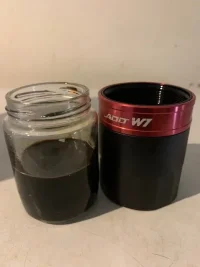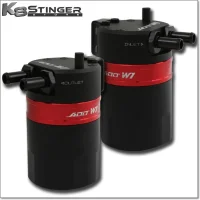Ok, as we are all aware, GDI engines are prone to clogging up intake valves, and we all assume that the manufacturers are probably aware of it.
So, Catch Cans.
If these simple devices are as good as people make them out to be, and as we all know, they are cheap to buy and any novice with half a brain can install them and maintain, so why aren’t companies like Kia installing OCC’s when they manufacture GDI engines. It would be in their best interests to do so, given the long warranties they give and it’s most likely that within that warranty period, blocked intake valves will come up and I assume, the warranty should cover that repair.
I for the life of me cannot see any reason why they can’t be implemented into the engine design at the RnD stage and built into every GDI engine. Less drama, happy GDI owners.
We all understand why manufacturers have to implement engines to comply with emissions regulations, and there is more than enough evidence out there today to prove that there’s an issue.
So why are they not being fully implemented into GDI engines, and leaving it to the consumer to do so after purchasing. It can’t be a cost thing for Kia, so why is this still an issue in a MY19 GDI car?
Simon.
So, Catch Cans.
If these simple devices are as good as people make them out to be, and as we all know, they are cheap to buy and any novice with half a brain can install them and maintain, so why aren’t companies like Kia installing OCC’s when they manufacture GDI engines. It would be in their best interests to do so, given the long warranties they give and it’s most likely that within that warranty period, blocked intake valves will come up and I assume, the warranty should cover that repair.
I for the life of me cannot see any reason why they can’t be implemented into the engine design at the RnD stage and built into every GDI engine. Less drama, happy GDI owners.
We all understand why manufacturers have to implement engines to comply with emissions regulations, and there is more than enough evidence out there today to prove that there’s an issue.
So why are they not being fully implemented into GDI engines, and leaving it to the consumer to do so after purchasing. It can’t be a cost thing for Kia, so why is this still an issue in a MY19 GDI car?
Simon.






